Danish Cord Weaving For Mid-Century Modern Hans Wegner Chairs
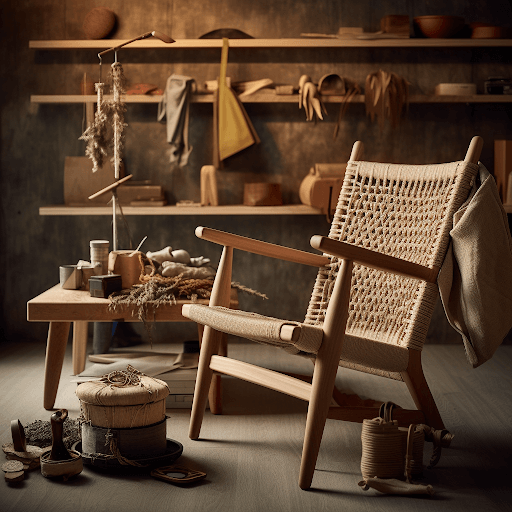
Danish Cord For Mid-Century Modern Hans Wegner Chairs Part 2
In the heart of Denmark, a rich tradition of craftsmanship and design has flourished for centuries. Much like the intricate patterns woven in Danish tapestries or the expertly crafted stonework seen on historic buildings, Danish cord weaving is an art form that requires both skill and patience.
As one delves deeper into this craft, it becomes clear that these woven masterpieces are not simply functional furniture pieces but somewhat symbolic works of art; each strand is carefully woven together to create a harmonious balance between form and function.
Among the many talented designers who contributed to this storied history of Danish design, Hans Wegner stands as a true icon in mid-century modern furniture. Known for his impeccable attention to detail and passion for traditional craftsmanship techniques, Wegner's chairs have become synonymous with quality and timeless style.
In particular, his innovative use of paper cord as a durable yet elegant material transformed what was once considered an ordinary household item into an enduring symbol of Scandinavian design excellence.
This article will explore the fascinating history of Danish cord weaving, delve into some of Wegner's most iconic chair designs, discuss the process behind weaving with paper cord, offer tips on maintaining these treasured pieces, and provide suggestions on how to incorporate Wegner's distinctive style into any home décor.
Key Takeaways
- Danish Cord Weaving is a traditional craft in Denmark that uses strands of paper cord woven around a wooden frame to form an intricate pattern, providing both support and visual appeal to furniture pieces.
- Hans Wegner, an iconic mid-century modern furniture designer, is known for his attention to detail and passion for traditional craftsmanship techniques, and his innovative use of paper cord transformed it into an enduring symbol of Scandinavian design excellence.
- Maintenance of Danish Cord Furniture requires regular dusting, avoiding exposure to direct sunlight for extended periods, and using a damp cloth with mild soap to clean spills or stains without rubbing or applying excessive pressure, among other things.
- Incorporating Wegner's style into home décor requires attention to detail and historical knowledge of his work. It involves thoughtfully integrating Wegner-inspired lighting, Scandinavian color palettes, minimalist artwork, organic textures, and functional accessories to create a cohesive interior that reflects Wegner's enduring influence on mid-century modern Danish design.
The History of Danish Cord Weaving

The evolution of Danish cord weaving traces back to the early 20th century, when Scandinavian designers began incorporating this intricate technique into their furniture designs, ultimately leading to iconic mid-century modern creations by Hans Wegner and his contemporaries.
With Danish origins rooted in traditional craftsmanship, weavers utilized various techniques to create these unique woven seats that were both comfortable and durable. The process involves using strands of paper cord, typically made from twisted kraft paper, which is then meticulously woven around a wooden frame to form an intricate pattern that provides support and adds visual appeal.
Danish cord weaving has evolved over the years as weavers experimented with different patterns and variations while maintaining its core principles. This dedication to preserving the integrity of the craft is evident in the work produced during the mid-century period when designers like Hans Wegner began integrating it into their designs.
The process requires patience and attention to detail as each strand must be carefully placed over or under adjacent cords creating a complex yet harmonious pattern. Additionally, skilled artisans often employ weaver techniques, such as wrapping individual cords around chair rails or adding extra knots for strength and durability.
As this craft gained popularity throughout Scandinavia and beyond, it became synonymous with high-quality design and superb craftsmanship indicative of mid-century modern aesthetics. Danish cord weaving remains relevant today due mainly to its association with iconic furniture pieces created by renowned designers like Hans Wegner, who embraced this time-honored technique in his beloved chair designs.
These chairs stand as testament not only to Wegner's vision but also to the skillful hands of craftsmen who dedicated themselves to mastering this art form. In exploring iconic Hans Wegner chair designs further in subsequent sections, one can appreciate the enduring appeal of Danish cord weaving within contemporary interiors today.
Iconic Hans Wegner Chair Designs
Iconic designs by Wegner, a renowned furniture designer, often exemplify the adage 'form follows function,' as evidenced in his timeless and elegant seating creations.
One such example is the Wishbone Chair (1949), which features a distinctive Y-shaped backrest that provides both support and aesthetic appeal. This chair has become synonymous with Danish design and showcases Wegner's craftsmanship through its masterful fusion of form and functionality.

Wishbone Chair (1949) 1
Another notable design is the Flag Halyard Chair (1950), which incorporates innovative materials like stainless steel and rope to create an airy yet supportive seat.
Wegner's exceptional skills as a cabinetmaker are evident in the intricacy of his designs, such as the Round Chair (1949) – also known as 'The Chair' due to its ubiquity in modern design history. This piece embodies simplicity, grace, and comfort while showcasing an unparalleled understanding of wood joinery techniques. The Round Chair incorporates 5mm Wide Binder Cane on the seat and back. It is a unique pattern that is woven in an X pattern rather than wrapping Danish Cord around the rail. Shop Wide Binder Cane at HH Perkins: https://hhperkins.com/collections/strand-cane/products/binder-cane-full-bunches?variant=43028555825395

The Peacock Chair (1947) further demonstrates this expertise; its intricate construction features spindle-like slats fanning out from a central point on the curved backrest – reminiscent of a peacock's plumage – providing both comfort and visual impact.

Beyond their aesthetic appeal, these iconic designs reflect an unwavering commitment to traditional craftsmanship and a keen eye for innovation. Such dedication to quality extends beyond the chairs' frames into their woven seats, often employing Danish cord or paper cord weaving techniques for added durability and comfort.
The seamless integration of these elements results in pieces that remain relevant today despite their mid-century origins, illustrating Wegner's enduring influence within a modern design. With this foundation laid by Wegner's visionary approach to furniture making, it becomes crucial to delve deeper into one aspect that contributed significantly toward his success: weaving with paper cord.
The Process of Weaving with Danish Paper Cord

Utilizing paper cords in the crafting of furniture, particularly in seating designs, has played a significant role in the enduring appeal and success of various timeless creations by renowned designers. This unique material offers both durability and comfort and a visually appealing texture that complements the clean lines and functionality characteristic of mid-century modern design.
With meticulous attention to detail and extensive historical knowledge, craftsmen have developed an array of paper cord techniques and weaving patterns that contribute to these iconic pieces' distinctive appearance and longevity.
One notable example is Danish cord weaving, which employs a specific method for twisting long strands of paper into durable cords. These cords are then woven together tightly using traditional looms or manual techniques to create intricate patterns such as basketweave or herringbone.
The process requires considerable skill and precision on behalf of the weaver, who must ensure that each strand is evenly spaced and tensioned throughout the weaving process. In addition to its aesthetic properties, this technique also imparts exceptional strength and support to furniture pieces—qualities highly valued by mid-century modern enthusiasts.
The craftsmanship involved in creating Danish cord woven furniture results in visually stunning pieces and ensures their lasting quality when correctly cared for over time. To preserve the beauty and integrity of these works, owners need to be mindful of their maintenance needs. This topic will be explored more comprehensively in subsequent sections about caring for your Danish cord furniture.
By understanding how best to maintain these treasures from generations past, one can continue to appreciate their artistry while ensuring their longevity for future generations.
Caring for and Maintaining Your Danish Cord Furniture

Proper preservation of paper cord furniture pieces necessitates diligent dedication to their specific maintenance requirements, ensuring aesthetic appeal and structural integrity for future generations. Danish cord furniture, particularly the iconic designs by Hans Wegner, requires a unique set of care practices due to the delicate nature of the woven paper cord seats and backs.
Adhering to proper cord cleaning techniques and repair tips ensures that these timeless pieces retain their original charm and functionality.
- Regularly dust the furniture using a soft brush or cloth, not snagging or damaging the cord.
- Avoid exposing the piece to direct sunlight for extended periods, as this may cause fading and weakening of the paper cord fibers.
- When cleaning spills or stains, use a damp cloth with mild soap and gently dab at the affected area without rubbing or applying excessive pressure.
- Periodically inspect your Danish cord furniture for signs of wear or loosening in cords; if necessary, seek professional guidance for repairs before further damage occurs.
- Refrain from harsh chemicals or abrasive materials on your Danish cord furniture; always opt for gentle solutions compatible with natural fibers.
Maintaining Danish cord furniture is essential to preserving its historical significance and showcasing the exquisite craftsmanship that went into creating each piece. With meticulous attention paid to proper care practices, such as thorough yet gentle cleaning techniques and timely repairs when needed, owners can ensure their treasured Hans Wegner chairs continue to make a statement in any space.
As you explore ways to incorporate Wegner's style into your home décor further, remember that caring for these mid-century modern masterpieces is just as crucial as selecting complementary design elements that highlight their timeless beauty.
Incorporating Wegner's Style into Your Home Décor

Incorporating the distinctive style of renowned furniture designers into your home décor requires a keen understanding of their design principles and an appreciation for the timeless aesthetics they offer. Hans Wegner, a prominent figure in mid-century modern Danish design, is known for his elegant and functional creations that seamlessly blend form and function.
To incorporate Wegner's style into your home décor, one must pay meticulous attention to detail, possess extensive historical knowledge of his work, and have a passion for craftsmanship. One effective way to introduce Wegner's design aesthetic into your living space is through carefully selected pieces, such as Wegner-inspired lighting fixtures that echo the clean lines and organic forms synonymous with his iconic chairs. Additionally, adopting Scandinavian color palettes characterized by muted tones of white, gray, and pale blue can create a harmonious backdrop for showcasing these timeless designs.
Complementing the furniture with minimalist artwork featuring simple geometric shapes or nature-inspired motifs will further accentuate the essence of this revered designer's philosophy. Moreover, incorporating organic textures such as natural wood finishes or woven textiles like Danish cord emphasizes the warmth and tactile appeal inherent in Wegner's creations. At the same time, functional accessories like sleek storage solutions or streamlined tableware uphold his devotion to practicality in design.
Creating a cohesive interior that reflects Hans Wegner's enduring influence on mid-century modern Danish design entails striking a balance between visual simplicity and functional complexity. By thoughtfully integrating elements such as Wegner-inspired lighting, Scandinavian color palettes, minimalist artwork, organic textures, and functional accessories into your décor scheme, you can capture the essence of this celebrated designer's legacy while creating an inviting atmosphere imbued with understated elegance and refined craftsmanship.
Conclusion
In conclusion, the enduring popularity of Danish cord weaving in mid-century modern furniture design, particularly in Hans Wegner's iconic chairs, attests to this technique's timeless appeal and craftsmanship.
The intricate process of weaving with paper cord lends a distinctive aesthetic quality while ensuring durability and comfort, making it an ideal choice for those seeking style and functionality in their home décor.
Moreover, thorough research into the history of Danish cord weaving and the various Wegner chair designs enables individuals to appreciate the beauty and cultural significance behind these pieces.
Proper care and maintenance further ensure that these works of art continue to enhance living spaces for years to come.
Ultimately, incorporating Wegner's masterful creations into one's home décor is a testament to the value placed on exceptional design, meticulous attention to detail, and profound respect for skilled craftsmanship.
Where To Purchase Danish Cord?
For generations, Danish Cord has been a legendary material that has stood the test of time. When it comes to authentic Danish Cord, HH Perkins Co. has been leading the industry in the United States for over 60 years. Their commitment to quality and customer satisfaction has made them the most reliable source for genuine Danish Cord. HH Perkins offers a wide range of products, including Laced Danish Cord, Unlaced Danish Cord, Black Danish Cord, and White Danish Cord, making them the ultimate destination for all Danish Cord needs. They understand the importance of meeting their customers' needs and that's why they offer both small and large quantities of Danish Cord. Additionally, they have now added 3.5mm Thick Cut Laced Danish Cord to their online catalog, demonstrating their dedication to providing the best products to their customers. It's worth noting that HH Perkins only sells authentic Danish Cord, ensuring that their customers receive the highest quality Denmark Paper Cord available on the market. Whether you're using Danish Cord for crafts, basket weaving, rim fillers, or rock wrapping Zen Stones, HH Perkins is your best source to help you. They're always available to answer any questions and are willing to help any customer who reaches out to them. Master the Art of Japanese Rock Wrapping: Creating Zen Stones, Spiritual Benefits and Creative Ideas
Danish Paper Cord is a beautiful and legendary material. If you ever have questions about products or how to weave with them HH Perkins is the best source to help you. They always answer the phone and are willing and able to help any customer who reaches out to them. Visit https://hhperkins.com/collections/danish-cord for all of your Danish Cord Needs or call (203) 787-1123 to purchase by phone.
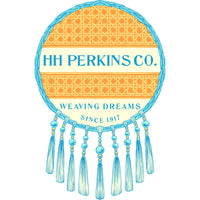



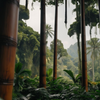
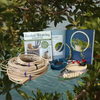
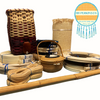
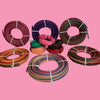

I got a old woven rocking chair & ottoman from a friends fathers abandoned house guess it sat in the house for years it was a reproduction vof a Wagner chair stamped "made in chech rep sorry if that’s wrong I didn’t want to spell the name of the country either so basically I live in Iowa where you can’t find anything needed for life but food .As i took the chair apart I counted every wrap that was unwound, I made a sketch of the knots as I took them off this was the first time id tried this.I sanded &stained the Ottoman & chair but didn’t know what I was gonna use in place of the cord so in my head I needed something the same diameter band something that was long & I could get locally I went for a black Paracord figured it would outlast a natural product lots of colors if wanted but I surprised myself when they where finished.i say you never know what you can do unless you try. So don’t be scared to try most the time your gonna amaze yourselves.